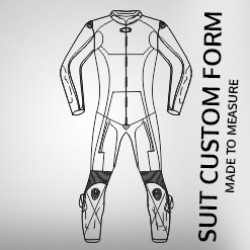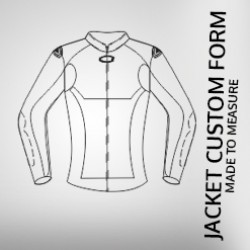A Step-by-Step Guide to Fitting a Motorcycle Racing Suit
Introduction
Fitting a motorcycle racing suit is crucial for the safety and comfort of any rider hitting the track. A properly fitted suit not only enhances aerodynamics but also provides necessary protection during high-speed maneuvers and unfortunate crashes. In this article, we'll walk you through the essential steps to ensure you get the perfect fit for your motorcycle racing suit.
Step 1: Choose the Right Suit
Selecting the right racing suit is the first and most critical step. Look for a suit made from high-quality leather or synthetic materials designed to offer maximum abrasion resistance and protection. Consider suits with reinforced padding on the elbows, shoulders, and knees. Look for CE-certified armor for extra safety.
Step 2: Take Accurate Measurements
Before making a purchase, accurately measure your body to determine the correct size. You'll need measurements for your chest, waist, hips, inseam, and arm length. Refer to the manufacturer's size chart to find the suit that matches your measurements most closely.
Step 3: Dress Appropriately
When trying on the racing suit, wear thin, moisture-wicking clothing to ensure the measurements remain accurate. Avoid wearing thick clothing, as it can lead to a larger suit size that might not be optimal for racing.
Step 4: Ensure Mobility
A racing suit should fit snugly without restricting movement. When trying it on, perform some basic movements such as bending, reaching, and sitting on a motorcycle. Check if you can comfortably grip the handlebars and operate the controls without feeling constricted.
Step 5: Check Sleeve and Leg Lengths
Ideally, the sleeves should reach just past your wrists, while the legs should cover your ankles. This ensures adequate protection and reduces the risk of exposed skin during a crash. Moreover, a proper fit in these areas helps maintain your aerodynamic posture on the bike.
Step 6: Assess Flexibility
A good racing suit should be flexible in key areas to allow for dynamic body movements during high-speed riding. Check for stretch panels or accordion-style leather in the joints, such as the knees and elbows. This feature contributes to your overall comfort and control on the motorcycle.
Step 7: Consider Body Contouring
Modern racing suits often feature pre-curved arms and legs, designed to match the natural riding position. This feature improves overall comfort, reduces fatigue, and enhances your ability to respond quickly on the track.
Step 8: Check Fit Around the Neck and Collar
A racing suit with a snug neck and collar ensures that the suit won't chafe or flap at high speeds. Make sure it is comfortable and doesn't impede your head movements when looking over your shoulders.
Step 9: Evaluate Airflow and Ventilation
A well-ventilated racing suit is crucial, especially in hot weather conditions. Look for suits with perforated panels or ventilation zippers that allow air to circulate freely, keeping you cool and focused during intense racing sessions.
Step 10: Seek Professional Assistance
If you're unsure about finding the perfect fit, don't hesitate to seek the assistance of a knowledgeable salesperson or professional tailor. They can offer valuable insights and ensure you get the best possible fit for your body shape and riding style.
Conclusion
Fitting a motorcycle racing suit is a meticulous process that should not be rushed. Taking the time to find the right suit and ensuring it fits properly can make a world of difference in terms of safety, comfort, and performance on the track. Follow the steps outlined in this guide, and don't hesitate to seek expert advice to enjoy a perfect-fitting racing suit for your exhilarating adventures on the racetrack. Stay safe and ride confidently!


